Field Day Re-Cap: Dried Flower Production with Fred Howell
Color and fashion were the first topics of the day at Fred Howell’s field day. Surprising? Not if you want flowers to be a successful part of your business. “New color trends starts in home fashion magazines… it the color is accepted there, then it goes into women’s fashion, which is fairly disposable. Then it starts creeping into your home – on the wastebasket, the napkin holder, the tissue box… it’s full-circle when it’s in an automobile. That’s where a color ends.” Fred has seen many colors cycle through, in addition to varieties of flowers, ornamental grasses, and berries.
Unfortunately, Fred is finding that dried flowers themselves are a little out of vogue right now with modern designs, and increased shipping costs are also a factor in limited sales. But adapting the business to stay relevant is nothing new to Fred and his family. In 1963 the Howells began growing Christmas trees as a college fund for their seven kids, including Fred. The Christmas tree business saved their farm in the farm crisis of the 1980s, and they’ve continued to diversify. While Fred’s brother runs the tree farm, Fred and his wife, Cindy, have a diverse agritourism farm that includes a floral greenhouse, dried flowers, gift barn, pumpkin patch, corn maze, and an ever-growing list of Fred’s inventions for family fun. Three of their children – Jennifer, Josh and Erin – work with them. 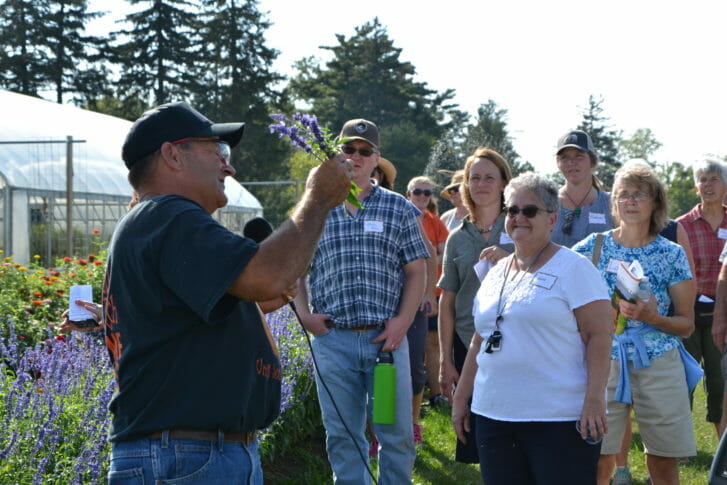
Fred began growing for dried flowers in 1985. In 1999 he added pumpkins, and says, “Pumpkins sell a lot of dried flowers. People that wouldn’t normally give dried flowers a second glance will buy them if they come to buy a pumpkin.”
Fred provided a list of all of the flowers he’s tried growing, and discussed those he liked, and those he didn’t. He starts with peonies, which you want almost all the way open to dry – Fred has almost 300 peony plants. The annual flower beds cover about two acres – at times he’s raised up to five acres. Other favorites include sweet corn tassels (sells for almost as much as sweet corn), marigold, annual statice (they used to have acres), Parker’s Gold yarrow, Artemisia (at one time replaced the acres of annual statice), and many others.
The group walks past blue salvia (Blue Better) in the field. “Lavender falls apart, which is why its sold in a bag. This doesn’t fall apart.”
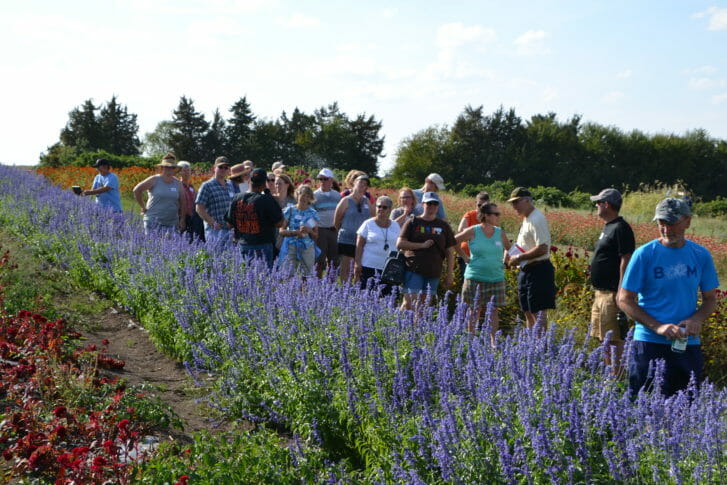
“Marigolds are nothing special, but we’re looking for a giant one that will be good after it’s dried.” Fred uses Felcos to pick, but usually if something is ready to pick, it doesn’t need a shear. “When your hand is full, put a rubber band around it.”
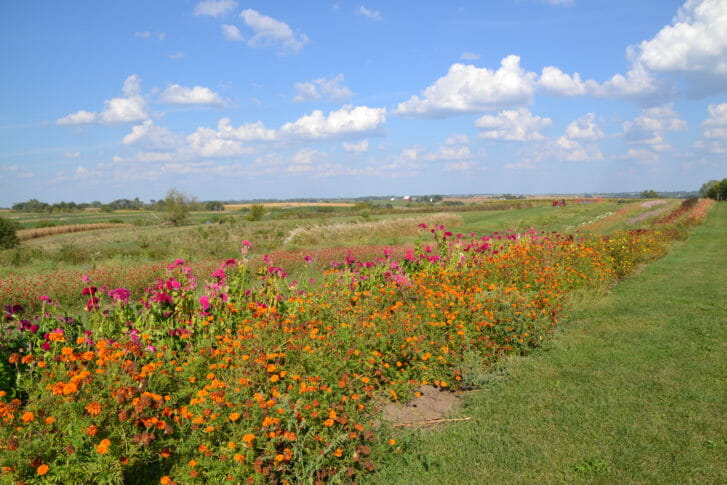
Fred uses irrigation for his flowers to make sure he gets good production, especially needed after transplanting. He also uses biodegradable plastic mulch, and transplants with a water wheel transplater. “It’s too time-consuming to plant seeds and weed; I prefer to plant plants,” he says. When necessary, he germinates his own starts, but because there’s so much else to do on the farm, it’s cost effective for him to buy 200-cell plugs from Germania or Ball Seed (Headstart Nursery).
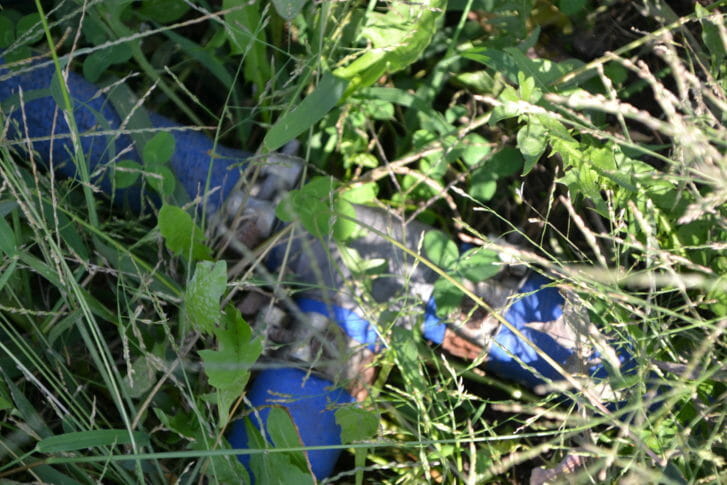
Fred grows several flowers from the Artemisia genus, including mugwort, silver king, silver queen and sweet Annie. “If you cut it up it comes up like a carpet. We take the tiller through this about 4 times in the spring and then hull it to kill it. If you let it come up on it’s own it gets tall and spindly and will mold, rots and lays down. If you give each plant about 18 inches, it’s like a small Christmas tree and is very usable. How you use it is up to your creativity. It’s probably in every arrangement we grow.”
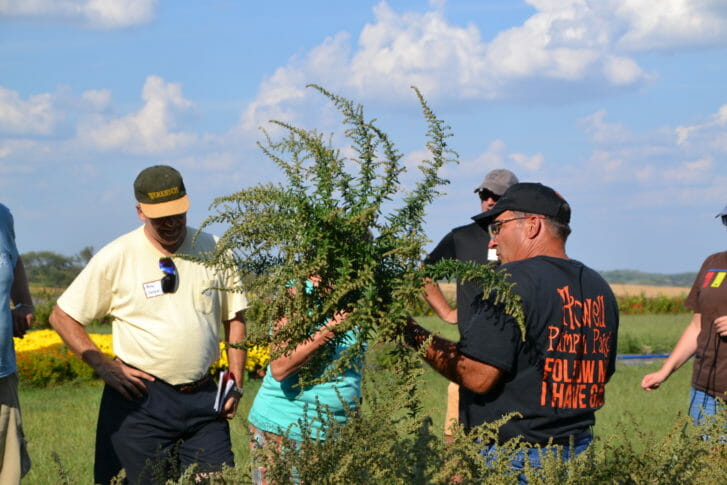
“The Artemisias are not difficult to grow. It’s the kind of thing that will escape a bucket.”
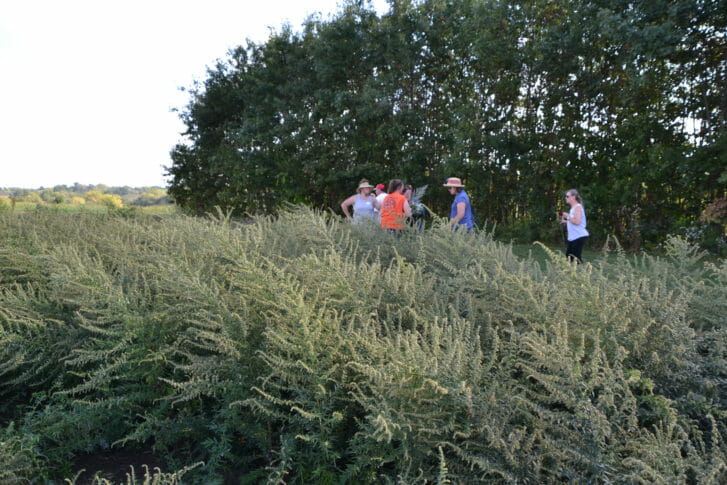
This bittersweet was originally on a trellis, but now certainly doesn’t need one. The foliage and the berries will both dry nicely.
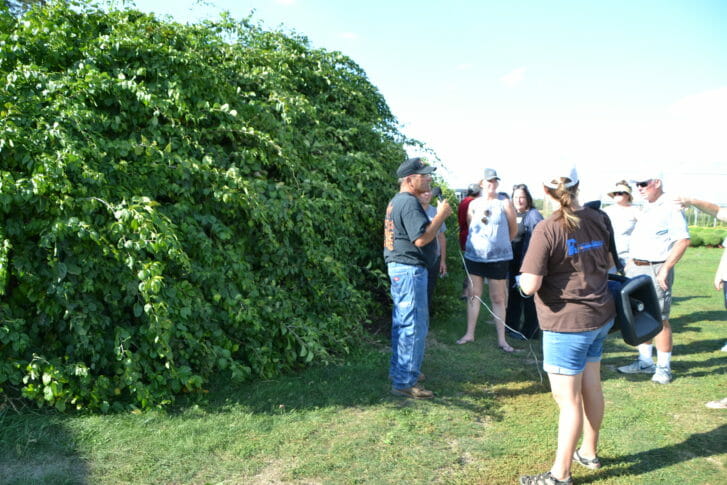
Fred’s daughter, Erin, selects a few stems in the annual flower beds. One of the farm’s high tunnels is visible in the background.
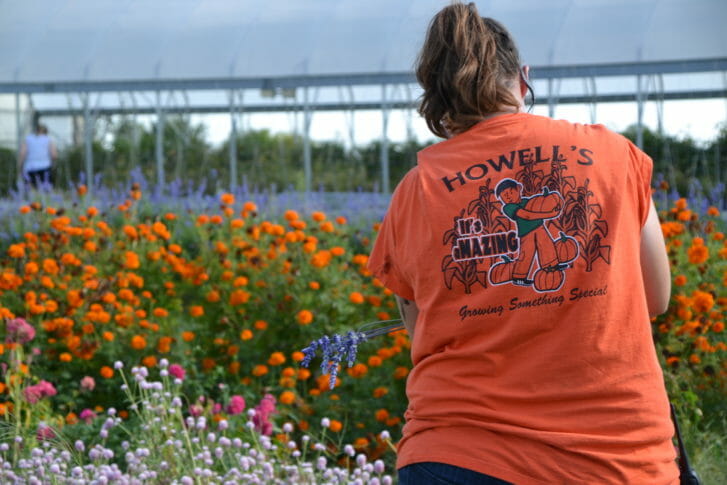
The blooming end of the flower sells it, but stem length matters – a longer stem feels like more value. Gomphrena, below.
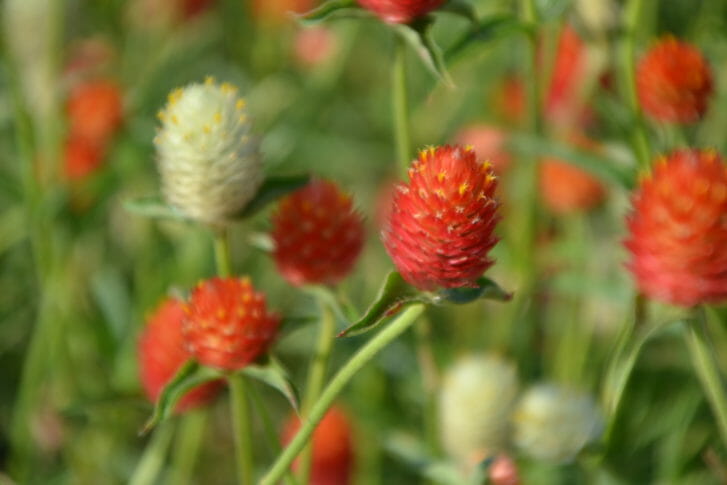
“I plant more than I can possible pick, so when I have the labor available I’m not waiting for blooms.” Below, Ammobium.
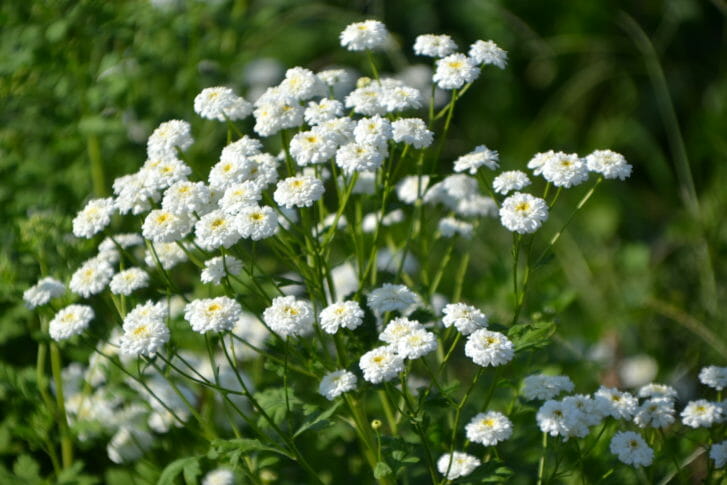
Mums getting ready to be sold to the farm’s fall visitors.
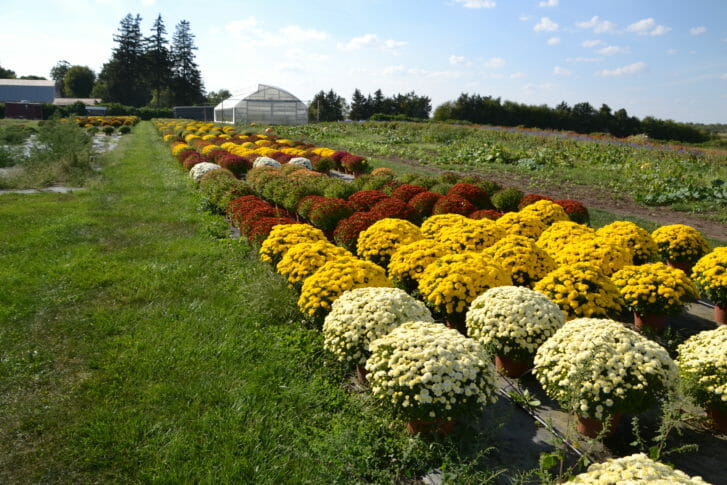
Fred uses a Mitsubishi rice reaper-binder to cut wheat. He has used it for millet, barley, and many ornamental grasses. Each bunch can be divided to 3 three bunches and retailed for ~$5.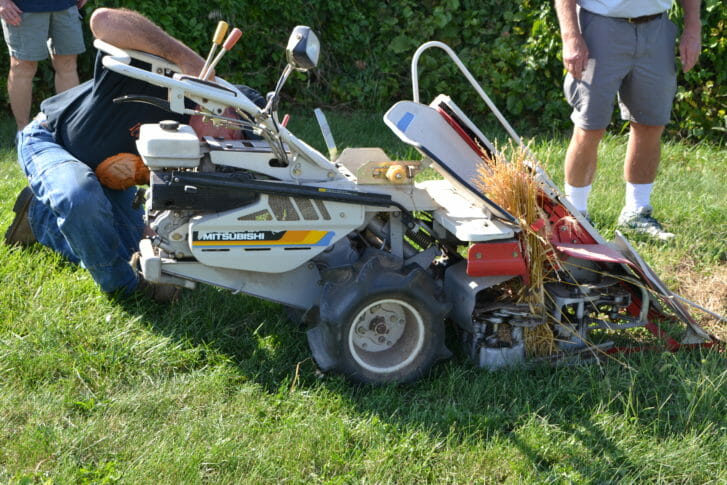
The binder cuts, collects, and binds a shock of wheat, then lays it on the ground.
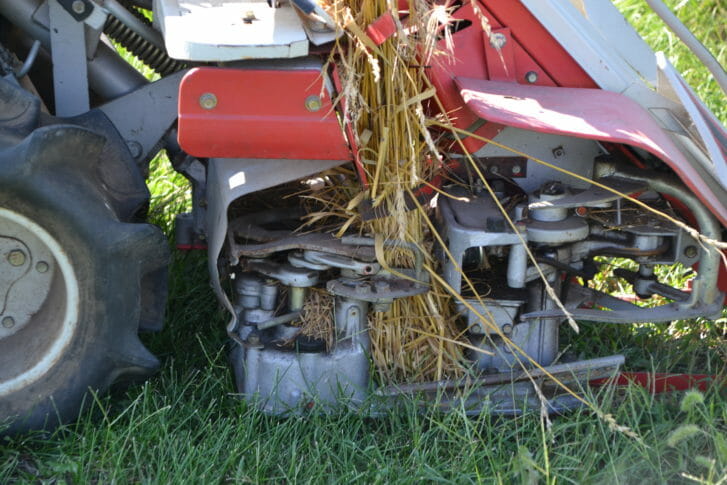
Fred inspects a bundle of wheat.
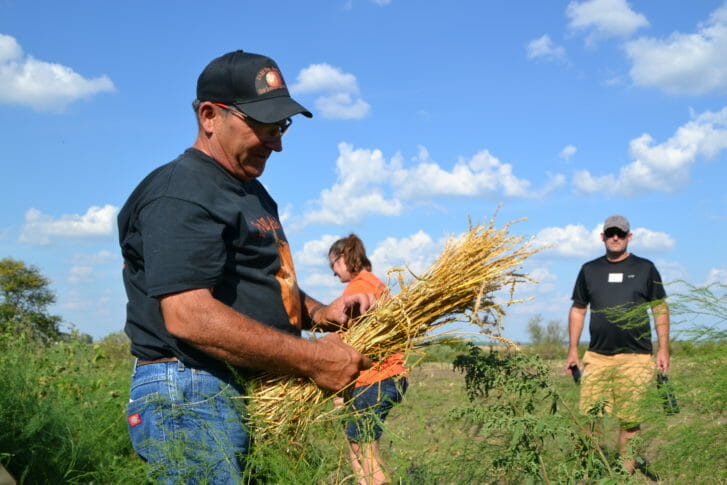
Lifetime PFI member Dewey Murkey takes a look at the movable dried flower rack. The rack can be wheeled indoors to protect the flowers from moisture.
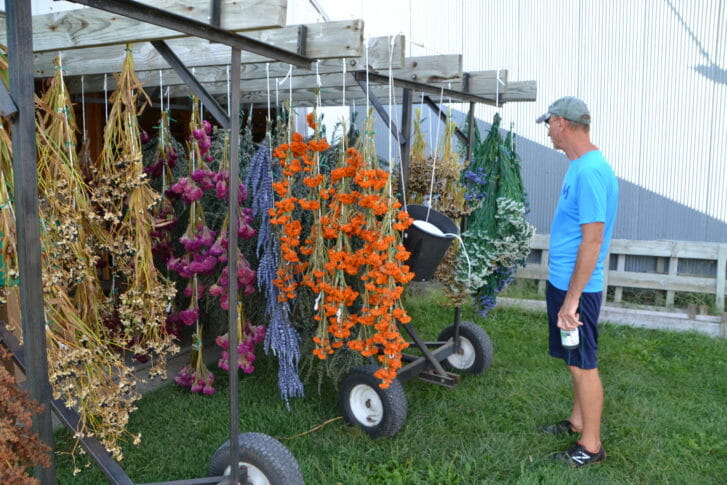
Dried marigold hanging on the outdoor rack.
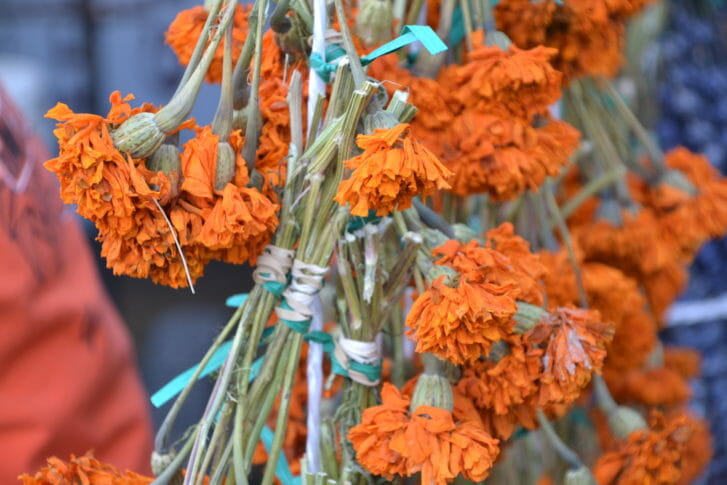
“Just because you can dry something doesn’t mean it’s marketable. It has to be something somebody wants.We preserve flowers by putting them in a bucket of glycerin and dye. Glycerin replaces the water molecule in the flower to keep it supple. The glycerin would turn everything bronze if you didn’t add dye to it. For things like flax, we dye it burgundy, red, purple, green. For things like annual statice, if you hang it upside down it will dry, but it will be brittle and shatter. If you use glycerin it won’t fall apart, at all.” The solution Fred uses to preserve flowers is glycerin, water, a wetting agent and bacterialcide, along with the dye and a pH adjustment. Below, 50-gallon drums are ready to fill buckets with the solution.
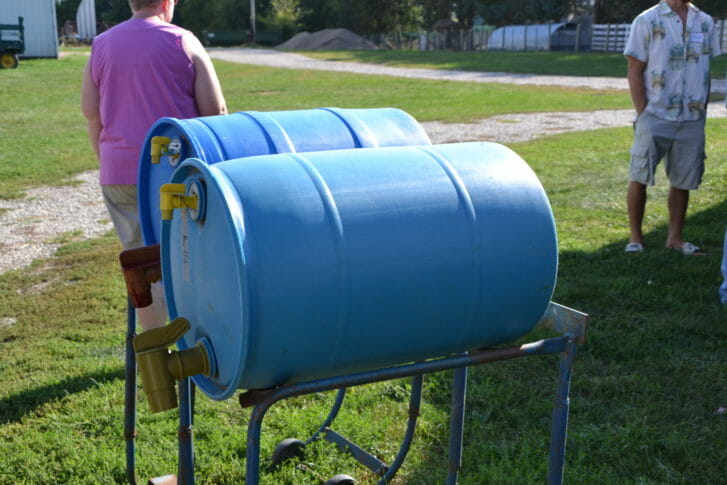
Artemisia soaking up green-dyed glycerin solution.
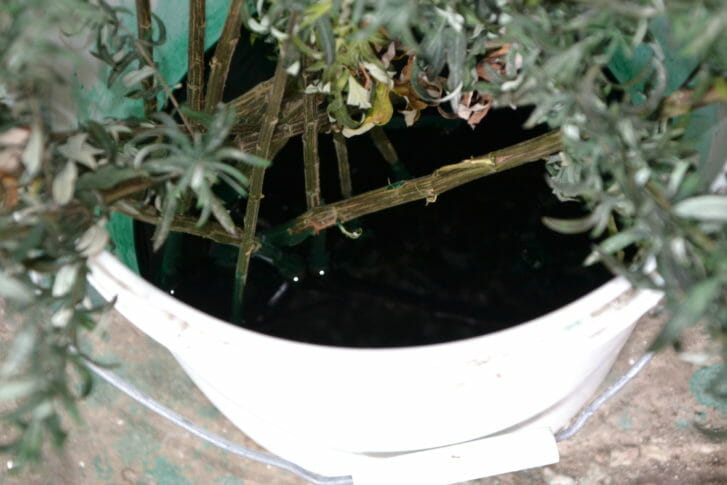
Blackberry lily, gone to seed, hung up to dry.
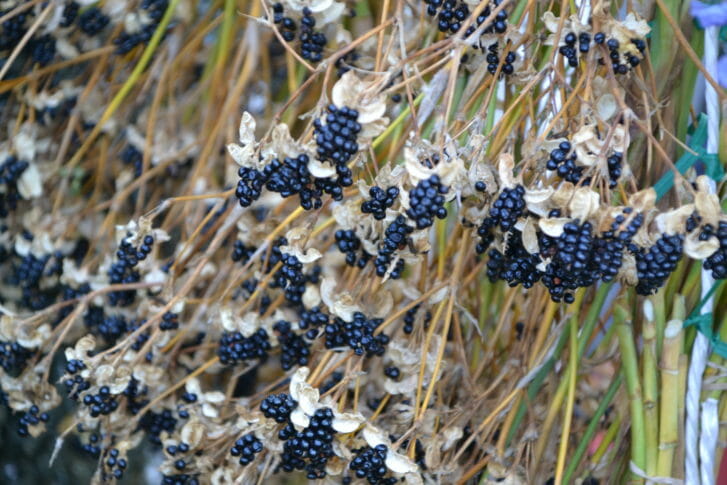
Green dye keeps the stems supple and colorful.
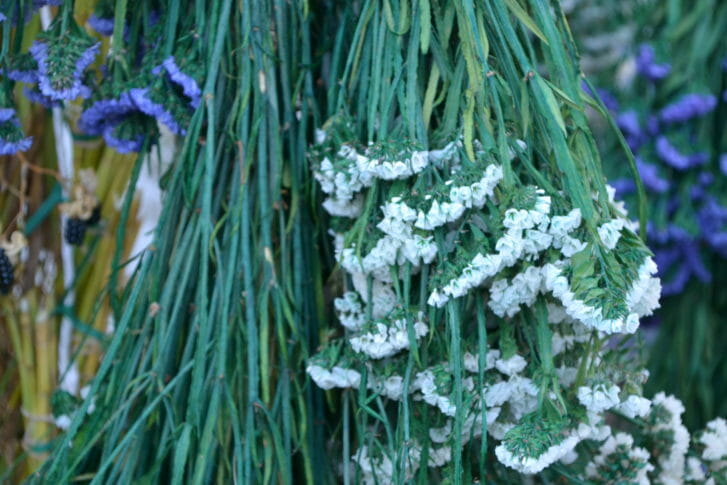
Dried flowers hang from the rafters in the loft of the Howell’s retail barn.
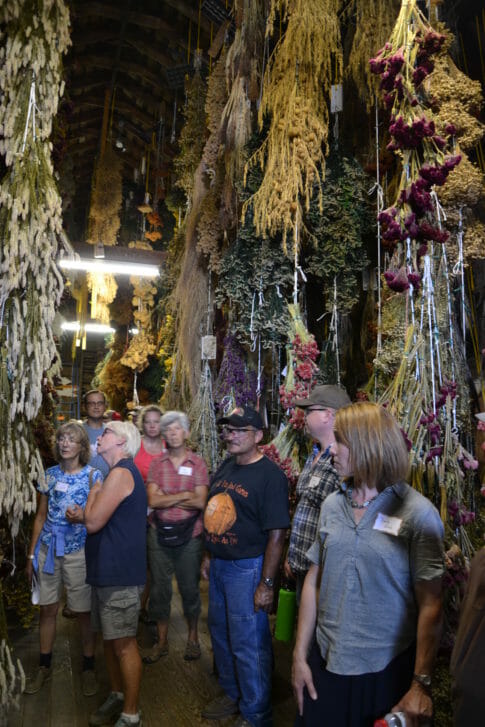
A side-by-side comparison – the flowers on the left have been soaked in green-dyed glycerin; the same flowers on the right have not. In addition to the color, the texture of the glycerin-soaked flowers was softer and seemed more durable.
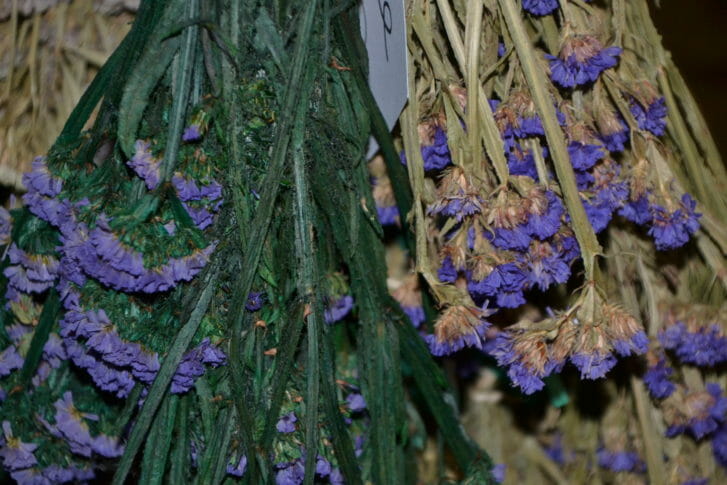
Rigging in the rafters allows the Howells to display the flowers with the blooms hanging down, creating a lot of storage space and awe-inspiring retail.
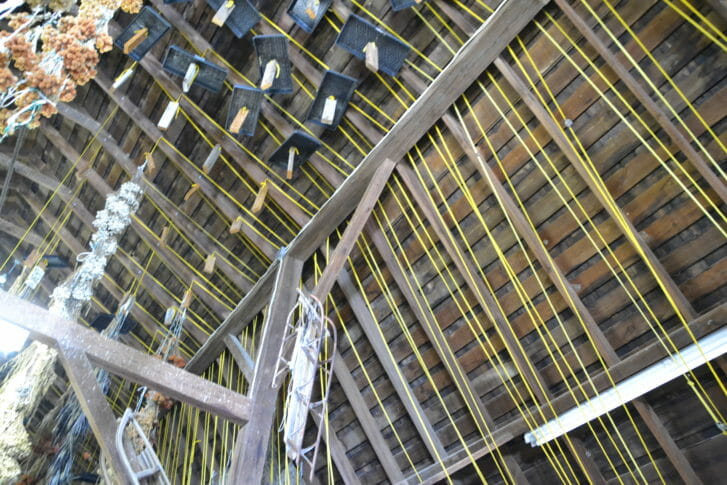
Each rope can be lowered from the floor.
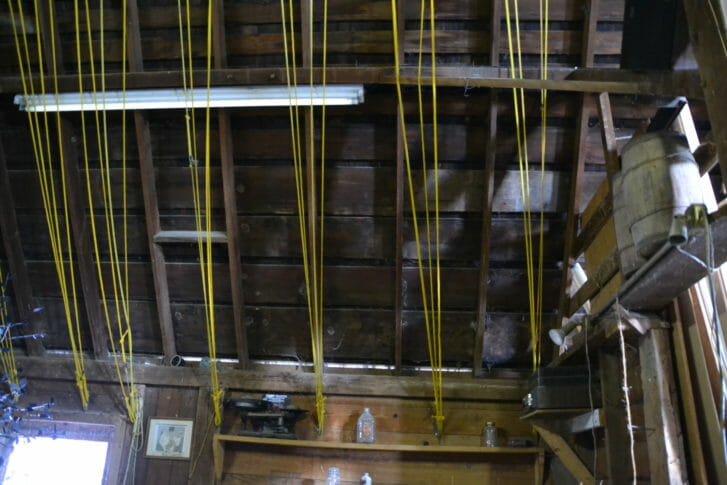
A stand of oak trees is used specifically for dried arrangements. Finding perfect leaves (without insect bites or tears) can be a challenge.
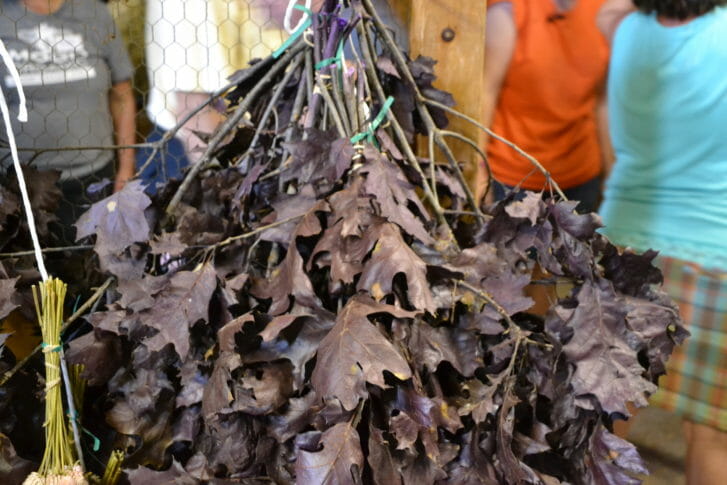
A finished dried floral basket. A basket like this will take a newer person an hour to create; a fast and experienced worker may finish in 20 minutes. Customers can buy arrangements, bouquets, or bunches of dried flowers.
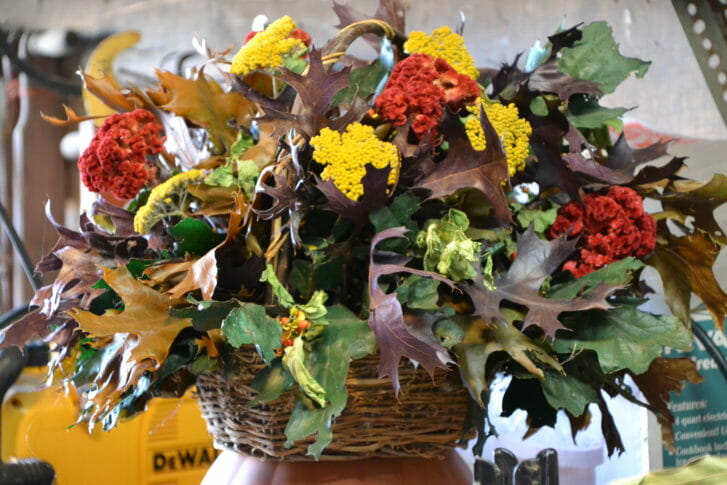
The field day ended with local apple and carmel in the farm’s gift shop – a state fair treat any time of year! Thank you to the Howell’s for hosting a great field day.
